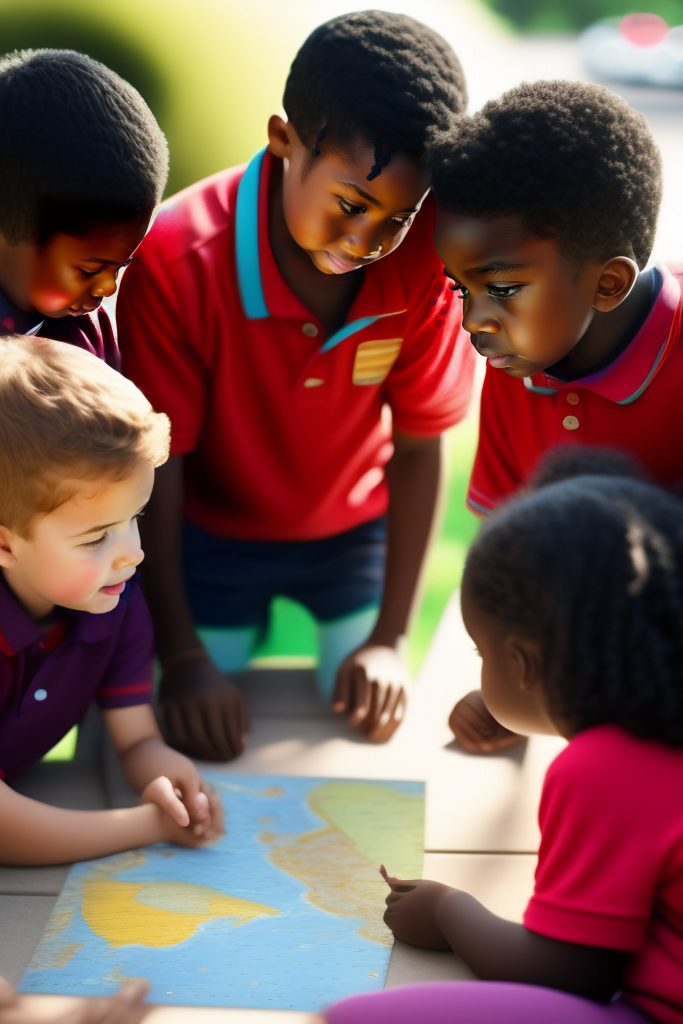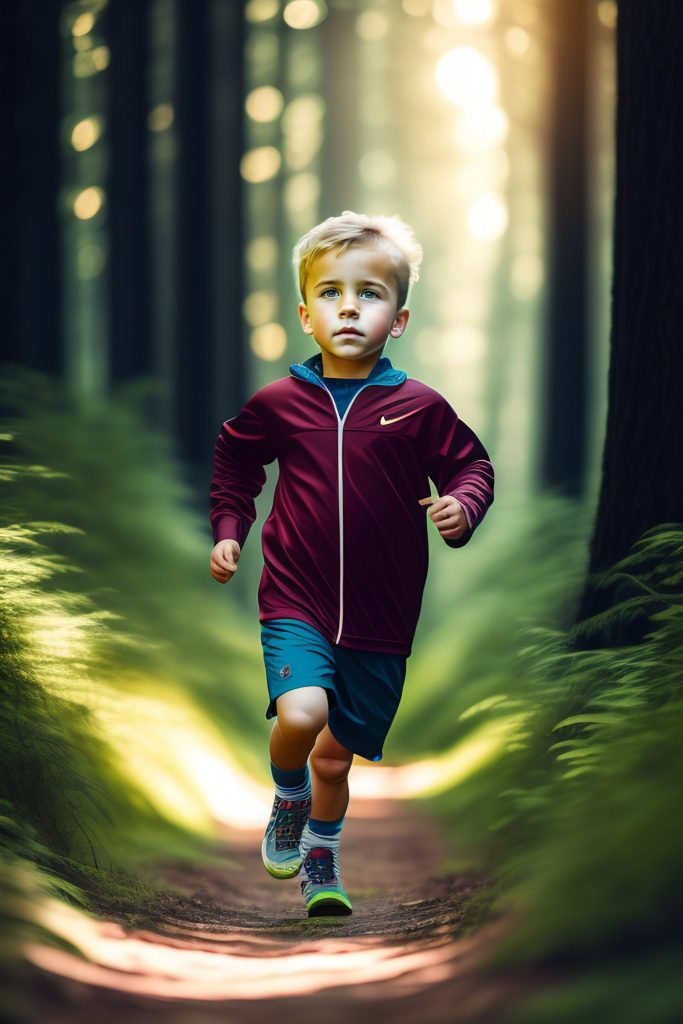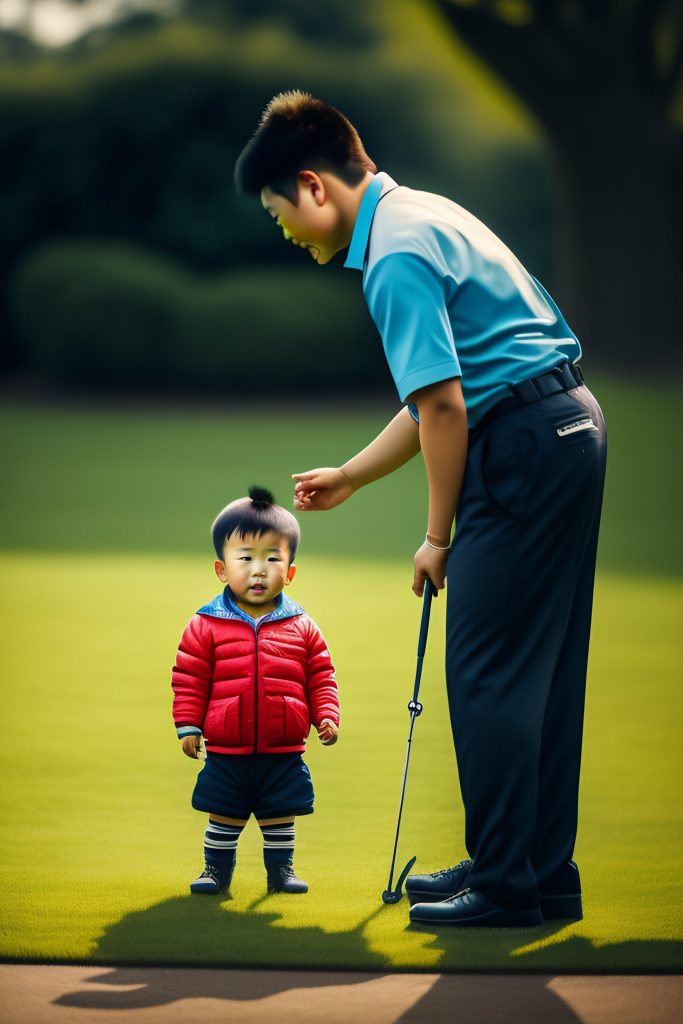
“Motivation is what Gets you started, Habit is what keeps you going”
In a world filled with screens and virtual adventures, it’s time to unlock the gateway to boundless fun and imagination—outdoor activities for kids! There’s something magical about stepping outside, feeling the warm sunshine on your face, and exploring the wonders of the natural world.
Whether it’s a backyard oasis or a nearby park, the great outdoors offers endless opportunities for children to unleash their energy, ignite their creativity, and embark on thrilling adventures. From scavenger hunts to water balloon tosses, sidewalk chalk masterpieces to nature walks, these fun and simple outdoor activities will captivate young minds and create memories that will last a lifetime.
So, let’s dive into a world where laughter echoes through the air, where nature becomes a playground, and where every day is an opportunity for new discoveries and endless joy. Welcome to the realm of fun and simple outdoor activities for kids!
So, let’s dive into a world of adventure and exploration with these top 15 fun and simple outdoor activities for kids.
- Scavenger Hunt: Few things can spark excitement like a scavenger hunt. Create a list of items to find, such as a pinecone, a yellow flower, or a feather, and watch as the little adventurers explore their surroundings, searching for treasures.
Scavenger hunts have long been a beloved activity for kids, offering a thrilling combination of adventure, problem-solving, and treasure hunting. They provide an excellent opportunity for children to engage their minds, explore their surroundings, and experience the joy of discovery. Whether you’re organizing a backyard hunt or venturing into a nearby park, a scavenger hunt is a versatile and entertaining outdoor activity that can be tailored to suit various age groups and settings.
The beauty of a scavenger hunt lies in its simplicity. All you need is a little creativity and a list of items or clues to find. You can customize the hunt to fit any theme or season, making it a perfect activity for birthdays, playdates, or family outings.
To get started, create a list of items or clues for the participants to find. For younger children, simple and recognizable items like leaves, rocks, or flowers work well. As kids get older, you can make the hunt more challenging by including specific types of leaves, different colors of rocks, or unique flowers.
If you want to add an educational twist, you can design the scavenger hunt to focus on specific themes like nature, animals, or history. This way, kids can learn about their surroundings while having fun. For example, you can ask them to find a certain type of bird feather, a specific tree species, or an object related to local history.
To make the scavenger hunt more interactive, consider incorporating riddles or puzzles as clues. These can be designed to lead participants from one location to another, heightening the sense of adventure and anticipation. The satisfaction of deciphering a clue and finding the next item or location adds an extra layer of excitement to the experience.
Scavenger hunts can also be turned into friendly competitions by dividing kids into teams and assigning points for each item found. This encourages teamwork, communication, and problem-solving skills as they work together to complete the hunt. At the end, you can celebrate the winners or offer small prizes for everyone’s participation, emphasizing the spirit of fun and camaraderie.
Remember, safety should always be a priority during a scavenger hunt. If the hunt takes place in a public space, ensure that children are supervised and aware of their surroundings. It’s important to respect nature, private property, and other individuals while searching for items.
In conclusion, a scavenger hunt is a fantastic and simple outdoor activity that engages children’s curiosity, encourages exploration, and fosters teamwork. It sparks their imagination, hones their observational skills, and provides them with a sense of accomplishment as they uncover hidden treasures. So, gather your young adventurers, create a list or clues, and let the thrilling journey of a scavenger hunt begin!
2. Nature Walk: Take a leisurely stroll through a nearby park or nature reserve. Encourage children to observe the wonders of nature, from vibrant flowers to fascinating insects. They can collect leaves, rocks, or interesting finds along the way.
Nature walks are an excellent way to introduce children to the wonders of the natural world while enjoying a fun and simple outdoor activity. Whether you explore a local park, a nearby trail, or even your own backyard, nature walks offer a multitude of benefits for kids, including physical exercise, sensory stimulation, and an appreciation for the environment.
One of the greatest advantages of a nature walk is that it requires minimal preparation and equipment. All you need is a comfortable pair of shoes, a sense of curiosity, and a willingness to embark on an adventure. Nature provides the backdrop, offering endless opportunities for exploration and discovery.
As you set out on your nature walk, encourage children to use their senses to observe and engage with the environment. Encourage them to listen to the sounds of birds chirping, leaves rustling, or water trickling. Prompt them to feel the different textures of tree bark, leaves, or flowers. Encourage them to use their sense of smell to identify the fragrances of flowers, the scent of fresh earth, or the aroma of pine needles. By actively engaging their senses, children become more connected to the natural world around them, enhancing their overall experience.
While on the nature walk, encourage children to take their time and observe the various elements they encounter. Encourage them to look for interesting rocks, vibrant flowers, unique insects, or different types of trees. You can even provide them with a small notebook or a camera to document their discoveries, fostering their curiosity and observation skills.
To make the nature walk more interactive, you can turn it into a game or a learning opportunity. Create a checklist of items or phenomena for kids to find or experience, such as spotting a certain bird species, identifying animal tracks, or observing cloud formations. This adds an element of excitement and encourages children to actively seek out and learn about the natural world.
As you explore, take the opportunity to discuss the importance of environmental conservation and the role we play in preserving nature. Teach children about the plants, animals, and ecosystems they encounter, instilling in them a sense of responsibility and respect for the environment.
Nature walks also provide a great opportunity for quality family time. Use the walk as an opportunity to engage in meaningful conversations, share stories, or simply enjoy each other’s company surrounded by the beauty of nature.
In conclusion, nature walks offer a fun and simple outdoor activity that allows children to connect with the natural world, engage their senses, and foster a love for the environment. They provide a valuable opportunity for exploration, discovery, and learning, while promoting physical activity and family bonding. So, put on your walking shoes, step outside, and let the magic of nature unfold as you embark on a delightful nature walk with your kids.
3. Sidewalk Chalk Art: Unleash your child’s creativity by providing them with colorful sidewalk chalk. They can transform the dull pavement into a canvas for their imagination, creating vibrant drawings, hopscotch grids, or even a game of four square.
Sidewalk chalk art is a delightful and creative outdoor activity that allows kids to transform the pavement into their very own canvas. With a box of colorful chalk in hand, children can let their imaginations soar as they create vibrant masterpieces, play games, and express their artistic flair. This fun and simple activity not only engages children’s creativity but also provides them with an opportunity to enjoy the outdoors and showcase their artistic skills.
The beauty of sidewalk chalk art lies in its accessibility and versatility. All you need is a patch of sidewalk or a driveway, a set of chalk, and a willingness to explore the possibilities. The vibrant colors of the chalk against the contrasting pavement create a visually appealing experience that captivates both the artist and any passersby.
Children can use the chalk to draw pictures, create hopscotch grids, or even design a game of four square. The only limit is their imagination. Encourage them to bring their favorite characters to life, draw landscapes, or invent whimsical creatures. With each stroke, they are not only expressing themselves but also honing their fine motor skills and hand-eye coordination.
Sidewalk chalk art is a great activity for all ages, from toddlers who can scribble and explore colors to older children who can create more intricate and detailed designs. It allows kids to experiment with different shapes, lines, and textures, fostering their artistic development while having fun outdoors.
Moreover, sidewalk chalk art offers a temporary medium, allowing children to embrace the impermanence of their creations. As rain or foot traffic washes away their artwork, kids learn to appreciate the ephemeral nature of art and the beauty of letting go. It also presents an opportunity for them to start anew, inspiring their creativity to flourish with each new creation.
Engaging in sidewalk chalk art can be a solo activity for self-expression, or it can be a collaborative endeavor where children work together to create a collective masterpiece. It encourages teamwork, cooperation, and the sharing of ideas. Kids can take turns adding to the artwork, building upon each other’s designs, and appreciating the collective effort.
Sidewalk chalk art also has the potential to spark connections within the community. Passersby might stop and admire the creations, strike up conversations, or even join in the artistic fun. It brings people together, fostering a sense of joy, creativity, and shared experiences.
In conclusion, sidewalk chalk art is a fun and simple outdoor activity that unlocks the artistic potential within children. It allows them to express themselves, develop their creativity, and connect with the outdoors. So, grab a box of chalk, head outside, and let your child’s imagination take flight as they transform the pavement into a colorful world of artistic wonder.
4. Water Balloon Toss: On hot summer days, nothing beats a water balloon toss. Fill up some balloons and have a friendly competition to see who can toss them back and forth the most times without breaking. Splashes and laughter guaranteed!
Water balloon toss is a classic and refreshing outdoor activity that guarantees laughter, excitement, and a whole lot of splashing fun. As temperatures rise, this simple and enjoyable game provides the perfect opportunity for kids to cool off and engage in friendly competition. With just a few supplies and a lot of enthusiasm, children can experience the joy of teamwork and the thrill of staying dry or getting drenched!
To get started, all you need are some water balloons and a wide open space, such as a backyard or a park. Fill the balloons with water, ensuring they are not too big to avoid popping easily. Divide the kids into pairs or teams, standing a comfortable distance apart.
The objective of the game is simple: toss the water balloon back and forth between partners without it breaking. As the game progresses, participants can gradually increase the distance between them to make it more challenging. The anticipation and suspense build with each successful catch, and the tension mounts as the balloons become more precarious.
Of course, the real fun comes when a water balloon finally bursts! The resulting spray of water brings laughter and excitement, turning the game into a refreshing water fight. Kids can chase each other, dodging and throwing balloons, and revel in the joy of getting soaked on a hot day. It’s the perfect way to beat the heat and create unforgettable memories.
Water balloon toss is not only a thrilling outdoor activity, but it also promotes teamwork, coordination, and motor skills. Children learn to communicate with their partners, develop hand-eye coordination, and improve their reflexes as they try to catch and throw the water balloons. It’s a wonderful opportunity for kids to work together, strategize, and learn the value of collaboration.
To add extra excitement, you can introduce variations to the game. For instance, you could incorporate a relay race, where teams must pass the balloon to each member in a line without it breaking. You could also set up targets and assign points based on accuracy, turning the game into a competitive challenge.
Safety is essential when playing with water balloons. Remind kids to aim below the neck and avoid throwing the balloons at faces to prevent accidents or injuries. Also, be mindful of the environmental impact and encourage responsible clean-up after the game.
In conclusion, water balloon toss is a fantastic outdoor activity that combines refreshing water play with friendly competition. It promotes teamwork, coordination, and laughter while providing a cool respite on hot days. So, gather your water balloons, assemble the teams, and get ready for a splashing good time with this fun and simple outdoor game!
5. Bubble Fun: Who doesn’t love bubbles? Allow kids to blow bubbles and watch as they float through the air. Challenge them to catch and pop as many bubbles as they can, or even attempt to create the biggest bubble imaginable.
Bubble fun is a timeless and enchanting outdoor activity that never fails to captivate the hearts and imaginations of children. With just a bottle of bubble solution and a wand, kids can create a world of shimmering spheres, floating dreams, and endless joy. This simple and delightful activity provides an opportunity for kids to engage their senses, foster their creativity, and experience the pure delight of chasing and popping bubbles.
To start the bubble adventure, all you need is a bottle of bubble solution and a wand. You can easily find bubble solution at most stores, or even make your own using dish soap and water. Dip the wand into the solution and watch as it becomes coated with the magical liquid. With a gentle wave or blow, a stream of iridescent bubbles will float into the air, sparking wonder and excitement.
As the bubbles dance through the breeze, children can embark on a quest to chase and catch them. The sheer delight of trying to capture these delicate spheres encourages kids to move and engage in physical activity, promoting gross motor skills and coordination. They can run, jump, and twirl in an attempt to catch and pop the elusive bubbles.
Bubble fun also encourages children to use their imaginations and creativity. They can observe the various sizes, shapes, and colors of the bubbles and let their imagination soar. They can pretend that the bubbles are magical fairies, floating planets, or even spaceships. With each bubble that floats away, new possibilities emerge, and the imagination takes flight.
For added excitement, you can introduce different bubble wands with varying shapes and sizes. This allows children to experiment and discover the different effects each wand produces. From small, rapid bubbles to giant, wobbling orbs, each creation adds a new element of wonder to the experience.
Another fun variation is to incorporate bubble art. Children can dip their wands in colored bubble solutions or add a few drops of food coloring to the bubble mixture to create vibrant, swirling patterns as the bubbles are blown. This allows them to express their creativity and create unique bubble masterpieces.
Bubble fun is not limited to daytime play. With the help of glow sticks or flashlights, you can transform the bubble-filled evening into a magical spectacle. The glowing bubbles create a mesmerizing effect, adding an extra element of enchantment to the experience.
It’s worth noting that bubble fun is not just for young children; people of all ages can enjoy the simple pleasures of chasing and popping bubbles. It can be a fantastic activity for family gatherings, playdates, or even a moment of relaxation and stress relief for adults.
In conclusion, bubble fun is a delightful and simple outdoor activity that sparks wonder, imagination, and laughter. It engages children’s senses, promotes physical activity, and encourages creative expression. So, grab a bottle of bubble solution, a wand, and get ready to embark on a whimsical journey filled with shimmering bubbles, contagious giggles, and unforgettable moments of joy. Let the magic unfold as you dive into the world of bubble fun!
6. Miniature Golf: Transform your backyard into a mini-golf course using household objects like cups, cones, and tubes. Let the kids putt their way through imaginative obstacles and work on their hand-eye coordination while having a blast.
Miniature golf is a fantastic and entertaining outdoor activity that combines skill, creativity, and a touch of friendly competition. Whether you’re visiting a miniature golf course or creating your own course at home, this fun and simple activity offers hours of enjoyment for kids of all ages. It’s a great way to improve hand-eye coordination, practice patience, and experience the thrill of sinking that perfect putt.
Miniature golf courses are designed with colorful obstacles, unique themes, and challenging holes, all scaled down to a size that suits young players. The courses often feature imaginative elements such as windmills, ramps, tunnels, and water hazards, adding an exciting twist to the game. This whimsical environment sparks children’s imaginations and immerses them in a world of adventure as they navigate the course.
Visiting a miniature golf course provides a ready-made experience, complete with professionally designed holes and obstacles. Kids can follow the course layout, compete against friends or family members, and aim for a hole-in-one. It’s an opportunity to learn the rules of the game, develop sportsmanship, and practice patience as they wait for their turn.
If a miniature golf course isn’t readily available, you can create a mini-golf experience at home or in your backyard. Use household items, such as cardboard, plastic cups, and ramps, to construct your own course. Get creative and design unique obstacles using objects you already have, such as books, tubes, or toys. This DIY approach adds an extra level of fun and personalization to the game, allowing kids to unleash their creativity and imagination.
Miniature golf is an activity that can be enjoyed by the whole family. It provides an opportunity for parents and children to bond, strategize, and compete in a friendly and relaxed environment. It’s a chance to cheer each other on, celebrate successes, and learn from challenges.
Playing miniature golf offers various benefits for kids. It enhances their hand-eye coordination as they aim and swing the putter. It encourages concentration and focus as they analyze the course and plan their shots. The game also promotes spatial awareness and problem-solving skills as they navigate through obstacles and determine the best angles and force to hit the ball.
Beyond the physical and cognitive benefits, miniature golf fosters a sense of friendly competition and sportsmanship. Children learn to take turns, respect the rules, and celebrate the achievements of their fellow players. It’s an opportunity to teach them about resilience, as they learn to overcome obstacles and try again after a missed shot.
In conclusion, miniature golf is a fun and simple outdoor activity that combines skill, creativity, and friendly competition. Whether you visit a miniature golf course or create your own at home, this game offers an enjoyable experience for kids of all ages. So, grab a putter, choose your favorite ball, and get ready to tee off on a miniature golf adventure filled with laughter, excitement, and unforgettable moments.
7. Outdoor Picnic: Pack a delicious picnic lunch and head to a nearby park or simply set up a cozy blanket in your backyard. Enjoy the great outdoors while indulging in tasty treats and spending quality time together as a family.
An outdoor picnic is a delightful and versatile activity that combines the joy of dining al fresco with the pleasures of nature. Whether you’re in a park, at the beach, or even in your own backyard, a picnic provides the perfect opportunity for kids to enjoy delicious food, engage in playful activities, and create cherished memories. It’s a fun and simple outdoor activity that brings families and friends together to savor the beauty of the outdoors.
To prepare for an outdoor picnic, gather a blanket or a picnic mat, a picnic basket or cooler filled with your favorite healthy kids snacks and treats, and don’t forget to pack some refreshing beverages. Choose a scenic spot where kids can immerse themselves in nature, whether it’s under the shade of a tree, near a picturesque lake, or by the sandy shores.
The beauty of an outdoor picnic lies in its flexibility. It can be as simple or as elaborate as you desire. The key is to create a relaxed and inviting atmosphere where children can enjoy the company of loved ones and embrace the outdoor surroundings.
As you settle down for the picnic, encourage kids to engage in various activities that make the most of the outdoor setting. They can play classic games like frisbee, tag, or a game of catch. They can fly a kite, blow bubbles, or have a friendly race. These activities promote physical exercise, coordination, and social interaction, all while enjoying the fresh air and natural surroundings.
Another fun idea is to include a nature scavenger hunt as part of the picnic. Create a list of items for kids to find in the surrounding area, such as a specific type of leaf, a feather, or a certain colored flower. This not only adds an element of adventure to the picnic but also encourages children to explore and appreciate the beauty of the natural world.
During the picnic, take the opportunity to engage in meaningful conversations, storytelling, or even a sing-along session. Encourage kids to share their thoughts, experiences, and dreams. This creates a relaxed and open atmosphere where everyone can connect and create lasting memories.
Food is a central part of any picnic, and it’s an opportunity to include a variety of delicious and kid-friendly treats. Pack a selection of finger foods like sandwiches, fruit skewers, cheese and crackers, and bite-sized snacks. Don’t forget to include some healthy options like carrot sticks, hummus, or yogurt. Make it interactive by involving the kids in preparing the picnic snacks or letting them assemble their own sandwiches or wraps.
Picnics also provide an excellent opportunity to teach kids about the importance of sustainability and environmental stewardship. Encourage them to use reusable plates, utensils, and water bottles, and remind them to clean up and properly dispose of any waste. Teach them to appreciate and care for the natural environment by leaving the picnic spot as clean as they found it.
In conclusion, an outdoor picnic is a wonderful and simple activity that combines good food, nature, and quality time with loved ones. It allows kids to enjoy the beauty of the outdoors, engage in playful activities, and create cherished memories. So, pack your picnic basket, find the perfect spot, and get ready for a delightful outdoor adventure filled with laughter, delicious treats, and the warmth of shared moments.
8. Obstacle Course: Create an exciting obstacle course using hula hoops, cones, jump ropes, and anything else you have on hand. Encourage kids to navigate through the course, jump over obstacles, crawl under ropes, and test their agility and coordination.
An obstacle course is an exciting and adventurous outdoor activity that challenges kids to navigate through a series of physical challenges, obstacles, and obstacles. It offers a fun and engaging way for children to test their agility, strength, and problem-solving skills while enjoying the great outdoors. Whether you set up a course in your backyard or visit a dedicated facility, an obstacle course promises hours of energetic fun and boundless excitement.
Creating an obstacle course can be as simple or as elaborate as you desire. You can use everyday items found in your home or yard, such as hula hoops, cones, ropes, tires, and tunnels, to construct a series of challenges. Arrange them in a sequence that encourages kids to crawl, jump, balance, climb, and maneuver their way through the course.
The beauty of an obstacle course lies in its versatility. You can customize the challenges based on the age and abilities of the participants. For younger kids, keep the obstacles low and easily manageable, focusing on activities that promote balance and coordination. Older children can take on more complex challenges that require greater strength and endurance.
When designing the course, consider incorporating a variety of activities to keep kids engaged and excited. Some ideas include crawling under a rope tunnel, hopping through a series of hula hoops, balancing on a beam or stepping stones, climbing over a low wall, and jumping over hurdles. You can also include water-themed challenges like running through a sprinkler or navigating a small pool filled with floating objects.
Obstacle courses not only provide physical exercise but also encourage problem-solving and critical thinking skills. Kids learn to assess the obstacles, strategize the best way to overcome them, and adapt their approach if needed. They develop resilience and perseverance as they encounter challenges along the course and work to overcome them.
To make the obstacle course more interactive and competitive, you can time each participant and turn it into a friendly race or challenge. This adds an element of excitement and motivation as kids strive to complete the course in the fastest time. You can also introduce teamwork by having kids complete the course in pairs or small groups, encouraging cooperation and collaboration.
Safety is paramount when setting up an obstacle course. Ensure that the course is age-appropriate and free from hazards. Clear any sharp or dangerous objects from the area, secure loose items, and provide proper supervision throughout the activity. It’s also essential to explain the rules and guidelines to the participants, emphasizing the importance of caution and respecting boundaries.
Obstacle courses can be enjoyed in various settings, from your backyard to local parks or even specialized facilities designed specifically for this purpose. These dedicated facilities often offer a range of challenging obstacles, such as climbing walls, rope courses, and zip lines. Visiting such facilities can provide an additional level of excitement and offer opportunities to try more adventurous obstacles under the supervision of trained professionals.
In conclusion, an obstacle course is a fun and simple outdoor activity that engages children’s physical abilities, problem-solving skills, and sense of adventure. Whether you create a course at home or explore specialized facilities, this activity offers a thrilling and energetic experience for kids of all ages. So, gather your materials, design your course, and get ready to conquer the challenges, test your limits, and embark on an unforgettable obstacle course adventure.
9. Frisbee Toss: Teach children the art of throwing and catching a frisbee. Engage in a friendly game of frisbee toss, encouraging them to develop their hand-eye coordination while enjoying the thrill of competition.
Frisbee toss is a classic and enjoyable outdoor activity that combines skill, coordination, and the thrill of watching a disc soar through the air. Whether you’re at the beach, in a park, or simply in your backyard, frisbee toss offers a fun and simple way for kids to engage in physical activity, enhance their hand-eye coordination, and experience the joy of friendly competition.
All you need for a game of frisbee toss is a frisbee, a group of enthusiastic participants, and some open space. The aim of the game is to throw the frisbee to a teammate or towards a target, such as a designated area or a specific object. Players take turns throwing and catching the frisbee, testing their throwing accuracy and their ability to predict and react to its flight path.
One of the great things about frisbee toss is its versatility. It can be played in a variety of ways, making it suitable for kids of different ages and skill levels. For younger children, a simple back-and-forth toss between two players can be a great introduction to the game. As kids grow older and more confident, you can introduce more complex throws, such as curved throws or long-distance tosses.
Frisbee toss is not just about throwing and catching—it can also involve creative elements and challenges. You can set up targets, like hula hoops or cones, and assign different point values to them. Players can earn points by successfully landing the frisbee in the targets, adding an extra layer of excitement and friendly competition to the game.
Another variation is to introduce freestyle frisbee, where participants can perform tricks, spins, and catches with the frisbee. This allows kids to showcase their creativity and develop their coordination skills as they experiment with different moves and maneuvers.
Frisbee toss offers several benefits for kids beyond the sheer fun factor. It helps improve hand-eye coordination as children learn to track the frisbee’s trajectory and adjust their movements to catch it. It also enhances motor skills, as they develop the ability to throw the frisbee with accuracy and control.
Playing frisbee toss outdoors provides an opportunity for kids to enjoy the fresh air, soak up vitamin D from sunlight, and engage in physical exercise. It encourages them to be active and mobile, running and moving around as they chase after the frisbee. This can contribute to overall physical fitness and well-being.
Moreover, frisbee toss promotes social interaction and teamwork. Kids can play in pairs or in teams, cooperating to achieve a common goal. They learn to communicate, strategize, and rely on each other’s abilities, fostering cooperation and developing important social skills.
Frisbee toss is also a low-cost activity that can be enjoyed almost anywhere. Whether you’re at a park, a beach, or even in your own backyard, all you need is a frisbee and some open space. It’s a great option for spontaneous outdoor play, family gatherings, or even organized frisbee events.
In conclusion, frisbee toss is a fun and simple outdoor activity that combines skill, coordination, and friendly competition. It offers a wide range of possibilities for play and can be enjoyed by children of all ages and abilities. So, grab a frisbee, gather some friends or family members, head to an open space, and get ready to experience the thrill of launching a disc through the air, catching it with precision, and creating joyful memories that will last a lifetime.
10. Nature Scavenger Hunt: Expand on the traditional scavenger hunt by focusing on nature-themed items. Craft a list that includes items like a spiderweb, a ladybug, or a unique-shaped leaf. Kids will have a blast exploring nature while checking off their finds.
Nature scavenger hunts are a wonderful way to spark children’s curiosity, encourage exploration, and deepen their connection with the natural world. This fun and simple outdoor activity not only gets kids moving and engaged but also teaches them about the environment, enhances their observation skills, and fosters a sense of adventure.
The concept of a nature scavenger hunt is straightforward. Children are given a list of items or clues that they must find in the surrounding outdoor area, such as a park, garden, or forest. These items can include natural objects like leaves, rocks, flowers, or specific wildlife sightings like birds, insects, or animal tracks. The objective is for children to actively search and discover these items, either individually or in teams, while enjoying the beauty of the outdoors.
One of the great things about nature scavenger hunts is their versatility. The difficulty level and themes can be tailored to suit the age and interests of the children participating. For younger kids, you can focus on simple and familiar items like different-colored leaves or common backyard birds. Older children can be challenged with more specific items or clues related to plant species, animal habitats, or natural phenomena.
To make the scavenger hunt more interactive, you can provide each child or team with a small bag or container to collect the found items. This adds a tangible element to the activity and allows kids to examine and study the objects they discover more closely. Encourage them to use their senses, touch and smell the leaves, listen to the sounds of nature, and observe the colors and textures of the items they find.
Nature scavenger hunts offer numerous benefits for children’s development. They enhance observation skills as kids learn to pay attention to details and search for specific items in their natural surroundings. It also improves problem-solving abilities as they decipher clues or adapt their search strategies when faced with challenges.
Engaging in a nature scavenger hunt encourages children to be active and explore the outdoors. They develop a sense of wonder and appreciation for the natural world as they encounter different plants, animals, and landscapes. This can foster a lifelong love for nature and environmental stewardship.
Furthermore, nature scavenger hunts provide an opportunity for learning and educational engagement. Children can learn about various plant and animal species, their habitats, and the importance of biodiversity. It can also be a chance to teach them about ecological concepts like food chains, life cycles, or the interdependence of species in an ecosystem.
Nature scavenger hunts can be organized in various outdoor settings, from local parks to hiking trails or even in your own backyard. They can be incorporated into family outings, school field trips, or community events. The activity can be adapted to different seasons, allowing kids to observe the changing colors of leaves in autumn, the blooming flowers in spring, or the tracks left by animals in the snow during winter.
In conclusion, nature scavenger hunts are fun and simple outdoor activities that engage children’s curiosity, encourage exploration, and deepen their connection with the natural world. It offers a chance to learn about the environment, enhance observation skills, and foster a sense of adventure and wonder. So, grab a list or create your own, head outside, and embark on a nature scavenger hunt filled with excitement, discovery, and a newfound appreciation for the beauty of nature.
11. Hiking: Embark on a family hike and discover the wonders of nature. Find a local trail suitable for children and let them marvel at the beauty of the great outdoors. Explore forests, climb gentle hills, and take in the fresh air and breathtaking views.
Hiking is a fantastic outdoor activity that allows kids to explore nature, embrace adventure, and enjoy physical exercise all in one. It offers a wonderful opportunity to disconnect from screens, breathe in fresh air, and immerse oneself in the beauty of natural landscapes. Hiking is not only fun and simple but also provides numerous benefits for children’s physical and mental well-being.
One of the great things about hiking is its versatility. It can be adapted to different skill levels and interests, making it suitable for kids of all ages. Whether you’re exploring local trails, national parks, or even your neighborhood nature reserve, there are hiking options available for every level of experience.
Hiking encourages physical activity and helps children develop their strength, endurance, and balance. As they walk along the trails, they engage in low-impact cardiovascular exercise, strengthening their heart and muscles. The varying terrains and inclines provide a natural challenge, allowing kids to enhance their motor skills and coordination.
In addition to the physical benefits, hiking also nurtures children’s mental well-being. It offers a break from the pressures of everyday life and allows them to connect with nature. Studies have shown that spending time in nature can reduce stress, improve mood, and enhance cognitive function. Hiking provides a serene and peaceful environment where kids can relax, recharge, and develop a sense of mindfulness.
Hiking is an excellent opportunity for kids to learn about the environment and gain appreciation for nature. They can observe different plants, trees, and wildlife along the trail, providing valuable lessons about biodiversity and ecosystems. Encourage them to ask questions, identify different species, and learn about the natural features of the area. This can spark their curiosity and instill a sense of environmental stewardship.
To make hiking more engaging and interactive, you can turn it into a learning experience. Incorporate educational activities along the way, such as identifying different types of trees, birds, or animal tracks. You can also encourage kids to collect leaves, rocks, or other natural objects to create a nature journal or collage later on. These activities deepen their connection with nature and foster a sense of exploration and discovery.
Safety is paramount when hiking with children. Ensure that you choose appropriate trails that match their abilities and age. Start with shorter, easier trails and gradually increase the difficulty as they gain experience. Pack plenty of water, snacks, sunscreen, and appropriate clothing for the weather conditions. Teach kids about trail etiquette, such as staying on marked paths, respecting wildlife, and leaving no trace.
Hiking is a great opportunity for quality family time. It allows parents and children to bond, share experiences, and create lasting memories together. Use the hiking excursion as a chance to have meaningful conversations, play games, or simply enjoy each other’s company. Disconnecting from technology and immersing yourselves in nature provides a unique setting for family connections and communication.
In conclusion, hiking is a fun and simple outdoor activity that offers numerous benefits for kids. It promotes physical fitness, mental well-being, and environmental awareness. Hiking provides an opportunity to explore nature, learn about the environment, and create cherished family memories. So, grab your backpack, put on your hiking shoes, and embark on a hiking adventure with your children, discovering the wonders of the natural world one step at a time.
12. Water Play: Set up a small inflatable pool or sprinkler in the backyard for refreshing water play on hot days. Kids can splash, jump, and cool off while engaging in sensory play.
Water play is a delightful and refreshing outdoor activity that brings a splash of fun and excitement to children’s playtime. Whether it’s a backyard sprinkler, a water table, or a pool, water play offers endless possibilities for entertainment and engagement on warm, sunny days. It not only helps children cool down but also stimulates their senses, promotes physical development, and encourages imaginative play.
One of the simplest forms of water play is running through a sprinkler or playing with a hose. Children can enjoy the thrill of jumping, dancing, and twirling in the spray of water, creating joyful memories that they will cherish for years to come. The unpredictability of the water’s direction and intensity adds an element of surprise and laughter to the activity.
Water tables are another popular option for water play. These tables are specifically designed with compartments, channels, and pouring devices to provide a hands-on experience with water. Children can pour, scoop, and transfer water using various tools and containers, exploring concepts of volume, flow, and cause-and-effect relationships. Water tables also offer opportunities for sensory exploration, as kids can feel the texture of water, experiment with floating and sinking objects, and observe the way water behaves.
For those with access to a pool, swimming and water games take water play to a whole new level. Swimming not only helps children develop their motor skills and coordination but also builds confidence and promotes a healthy lifestyle. From simple water games like Marco Polo and water tag to more elaborate games involving inflatables or diving toys, there is a wide range of options to keep kids entertained and active in the water.
Water play also encourages imaginative and creative play. Children can transform a simple bucket of water into a pretend cooking activity or a miniature boat race. They can build sandcastles at the beach and use water to mold and shape the sand. Water can become a magical element in their make-believe worlds, turning an ordinary backyard into a pirate’s lagoon or a mermaid’s paradise.
Safety is of utmost importance during water play. Adult supervision is essential, especially for younger children or those who are not strong swimmers. Ensure that the water is at an appropriate depth and that children are using floatation devices if needed. Teach them basic water safety rules, such as not running near the poolside, never leaving a child unattended near water, and knowing how to call for help in case of an emergency.
Water play provides a host of benefits for children’s development. It promotes physical fitness, as they engage in active play and exercise their muscles. Water play also helps develop motor skills and coordination as children manipulate and pour water, balance, and move in a different medium. It offers sensory stimulation, allowing children to explore the properties of water and its interactions with different objects.
Furthermore, water play fosters social interaction and cooperation. Kids can engage in water play with siblings, friends, or even with parents, fostering communication, teamwork, and sharing. They learn to take turns, negotiate, and collaborate, enhancing their social skills in a playful and enjoyable setting.
In conclusion, water play is a fun and simple outdoor activity that brings joy, excitement, and learning opportunities to children’s playtime. Whether it’s running through a sprinkler, playing with a water table, or swimming in a pool, water play provides a refreshing and stimulating experience. So, grab the sunscreen, put on swimsuits, and dive into the world of water play, where imagination, laughter, and memorable moments await.
13. Outdoor Art: Take arts and crafts outside! Provide children with paints, brushes, and canvases, and let them create their own masterpieces inspired by nature. The outdoor setting can ignite their artistic expression in new and exciting ways.
Outdoor art is a wonderful way to encourage children’s creativity, engage their senses, and connect with the beauty of nature. It offers a unique and inspiring setting for artistic expression, allowing kids to explore different materials, textures, and colors while enjoying the great outdoors. Whether it’s painting, drawing, or creating sculptures, outdoor art provides a fun and simple activity that stimulates imagination and fosters a love for artistic exploration.
One of the simplest forms of outdoor art is sidewalk chalk drawing. All you need is a box of colorful chalk and a paved surface like a driveway or sidewalk. Children can unleash their creativity by drawing pictures, creating hopscotch patterns, or even designing a mini mural. The vibrant colors against the backdrop of the outdoors add a special charm to their artwork, and the impermanence of chalk allows for endless experimentation and reinvention.
Nature itself can serve as a canvas for outdoor art. Kids can create temporary installations using materials they find in their surroundings, such as leaves, flowers, rocks, and twigs. They can arrange these natural elements to form patterns, shapes, or even 3D sculptures. This type of art not only encourages creativity but also deepens their appreciation for the beauty and diversity of the natural world.
Painting outdoors provides a more immersive and sensory experience. Whether it’s watercolor, acrylic, or even finger painting, the outdoor environment adds an extra dimension to the artistic process. Children can capture the vibrant colors of flowers, the textures of tree bark, or the play of light and shadow in their paintings. Outdoor painting allows for a more fluid and spontaneous approach, as they respond to the ever-changing scenery and elements around them.
Outdoor art also offers opportunities for collaborative and interactive experiences. Kids can engage in group art projects, where they work together to create a large-scale mural or a collaborative sculpture. This fosters teamwork, communication, and the ability to share and build upon each other’s ideas. Additionally, interactive art installations, like a giant outdoor canvas or a sensory garden, invite children to explore and engage with art in a hands-on and playful way.
Engaging in outdoor art has numerous benefits for children’s development. It promotes self-expression, allowing them to communicate their thoughts, emotions, and ideas visually. It enhances fine motor skills as they manipulate art materials and experiment with different techniques. Outdoor art also nurtures their observation skills, as they pay attention to the details and nuances of the natural environment.
Furthermore, outdoor art provides an opportunity for children to connect with the environment and develop an ecological awareness. By using natural materials or creating art inspired by nature, they gain a deeper appreciation for the world around them. It can also spark conversations about environmental conservation, sustainability, and the importance of protecting our natural resources.
Outdoor art is accessible and adaptable to different settings. Whether you have a backyard, a local park, or a nearby beach, you can find inspiration and create art in the great outdoors. It’s a versatile activity that can be enjoyed individually or as a group, making it suitable for family outings, school projects, or community events.
In conclusion, outdoor art is a fun and simple activity that combines creativity, nature, and the joy of artistic expression. Whether it’s chalk drawing, nature installations, or painting, outdoor art provides a unique and inspiring setting for children to explore their imagination, connect with the natural world, and develop their artistic skills. So, grab some art supplies, head outside, and let your child’s creativity flourish in the open air, where art and nature come together in harmony.
14. Leaf Pile Jumping: During the colorful autumn season, gather a pile of leaves and let children experience the simple joy
Leaf pile jumping is a classic and cherished outdoor activity that brings joy, laughter, and a sense of whimsy to children’s playtime. As autumn leaves blanket the ground, creating a colorful tapestry, kids have the perfect opportunity to engage in this fun and simple activity. Jumping into a pile of leaves not only provides a sensory delight but also encourages physical activity, imagination, and a connection with nature.
Creating a leaf pile is the first step in this exciting adventure. Rake up a generous pile of fallen leaves in an open area, such as a backyard or a park. The larger the pile, the more satisfying the jumps! Encourage children to participate in the process, as they can collect leaves, help with the raking, and contribute to the creation of their leafy playground.
Once the pile is ready, the real fun begins. Children can take turns running and leaping into the pile, relishing the sensation of the soft, rustling leaves breaking their fall. The act of jumping into a leaf pile stimulates their proprioceptive senses, providing a unique sensory experience as they immerse themselves in the texture, smell, and sound of the fallen leaves.
Leaf pile jumping is not only about physical activity but also encourages imaginative play. Children can imagine themselves soaring through the air, pretending to be birds or superheroes as they dive into the pile. The soft landing and the rustling sound of the leaves add an extra element of excitement to their imaginative adventures.
This activity also offers an opportunity to engage in social play. Kids can take turns jumping into the pile, cheering each other on, and even inventing games around the leaf pile. They can hide objects within the leaves and challenge each other to find them or create leaf angels by lying down and flapping their arms and legs to make impressions in the pile.
Leaf pile jumping provides various benefits for children’s development. It promotes physical fitness as kids engage in active play, running, jumping, and balancing. It helps develop coordination, balance, and spatial awareness as they navigate through the pile of leaves. This activity also encourages risk-taking in a safe and controlled environment, allowing children to build confidence and overcome fears.
Engaging with nature through leaf pile jumping fosters a deeper connection with the natural world. Children can appreciate the changing seasons, observe the vibrant colors of the leaves, and understand the cycle of life as they interact with nature’s elements. They learn about cause and effect, as they witness the leaves falling from trees and the transformation of the landscape.
Safety is essential during leaf pile jumping. Ensure that the area is clear of any sharp objects or debris hidden within the leaves. Check for any potential allergens, such as mold or insects, especially for children with sensitivities. It’s also essential to supervise younger children to prevent rough play or jumping from unsafe heights.
In conclusion, leaf pile jumping is a fun and simple outdoor activity that brings delight and adventure to children’s playtime. It combines physical activity, sensory stimulation, imagination, and a connection with nature. So, as the leaves begin to fall, gather them up, create a leafy haven, and let your children’s laughter and imagination soar as they dive into the cozy embrace of a leaf pile, creating memories that will last a lifetime.
15. Outdoor Movie Night: Set up a projector and a screen or a white bedsheet in the backyard and enjoy a movie night under the stars.
Outdoor movie nights are a magical and memorable way to enjoy a fun and simple activity with kids under the open sky. Transforming your backyard or any outdoor space into a cozy outdoor theater creates an atmosphere of excitement and anticipation. It’s an opportunity for families and friends to come together, relax, and enjoy a movie while basking in the fresh air and starry night.
To set up an outdoor movie night, you’ll need a few essentials. First, you’ll need a projector to display the movie on a large screen or a white bedsheet hung securely. Place the screen or sheet against a flat surface like a wall or attach it to a frame. Next, you’ll need a projector that can connect to a laptop, DVD player, or streaming device. Ensure you have a reliable power source or use a battery-powered projector for convenience.
Create a cozy seating area by arranging blankets, pillows, and chairs for comfortable viewing. Consider providing blankets or sleeping bags to keep everyone warm and cozy, especially as the evening progresses. Set up a small table for snacks and drinks, creating a mini concession stand for the kids to enjoy during the movie. Popcorn, candy, and beverages add to the movie theater experience.
Choose a family-friendly movie that appeals to both kids and adults. It could be a classic animation, a beloved adventure film, or a heartwarming family favorite. Take into account the age range of the children attending to ensure the movie is suitable and engaging for everyone. Let the kids have a say in the movie selection to make them feel involved and excited about the event.
As the sun sets and darkness falls, start the movie and let the enchantment begin. The experience of watching a movie outdoors adds a touch of magic to the event. The cool breeze, the twinkling stars above, and the anticipation of the movie transport everyone into a different world, enhancing the enjoyment and creating lasting memories.
To add extra fun to the outdoor movie night, consider incorporating themed decorations or activities. You could set up a photo booth area with props related to the movie, allowing kids to take memorable snapshots. Arrange a mini red carpet for the little ones to make their grand entrance before settling down for the movie. Encourage children to dress up as their favorite characters from the movie, adding an element of excitement and playfulness.
Outdoor movie nights provide numerous benefits for children and families. They offer a break from the usual routine, allowing everyone to relax, bond, and share quality time together. Outdoor settings promote a sense of freedom and connection with nature, enhancing the overall experience. It also encourages social interaction as kids and adults can engage in conversations, laugh together, and share their movie experiences.
Furthermore, outdoor movie nights foster a sense of community. Consider inviting neighbors, friends, or other families to join the event. It creates an opportunity for children to make new friends and for families to connect and strengthen relationships. The shared experience of watching a movie under the stars builds a sense of camaraderie and creates a positive and joyful atmosphere.
Safety is paramount during outdoor movie nights. Ensure the area is well lit to prevent trips and falls. Take necessary precautions to protect against mosquitoes or other insects, such as using citronella candles or bug repellents. If using electrical connections, ensure they are properly grounded and protected from moisture.
In conclusion, outdoor movie nights are a fun and simple activity that brings families and friends together for an enchanting experience. It combines the joy of watching a movie with the beauty of the outdoors, creating lasting memories and a sense of wonder. So, gather your loved ones, set up the outdoor theater, and let the magic unfold as you enjoy a movie night under the stars.
So, there you have it—our grand tour of fun and simple outdoor activities for kids. We’ve unlocked the door to a world where laughter reigns, imaginations run wild, and the great outdoors becomes an enchanted playground. From scavenger hunts to bubble popping, nature walks to frisbee tosses, these activities offer a respite from screens and virtual realities, allowing kids to explore, create, and connect with the world around them.
Remember, the beauty of these activities lies in their simplicity. You don’t need elaborate setups or expensive equipment. All you need is a little bit of creativity, a touch of enthusiasm, and the great outdoors as your canvas. Let kids be kids, as they jump in leaf piles, chase after bubbles, and embark on treasure hunts. These moments of unbridled joy and innocent play are what childhood memories are made of.
So, dear parents, caregivers, and fellow adventurers, let’s make a pact to prioritize outdoor play and ensure that kids have ample opportunities to disconnect from the virtual world and immerse themselves in the wonders of nature. Let’s encourage their curiosity, foster their creativity, and celebrate their boundless energy. Together, we can create a world where kids can roam freely, embrace the sun on their faces, and make memories that will warm their hearts for years to come.
Now, go forth and unleash the magic of these fun and simple outdoor activities. Let the laughter ring out, the smiles grow wide, and the bonds between children and nature flourish. May each adventure be filled with wonder and every outdoor moment be etched in their hearts forever. So, lace up those sneakers, grab a handful of chalk, and let the great outdoors become the ultimate playground for endless fun and unforgettable experiences. Happy exploring!
















